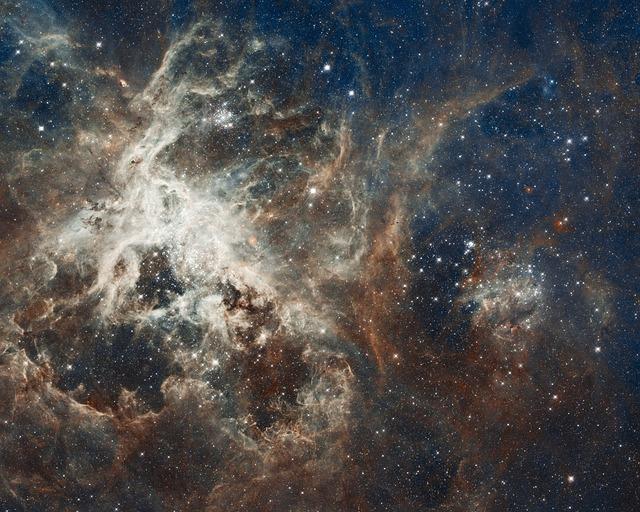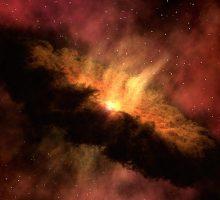- Introduction to the universe: What is the universe, and how do we study it?
- The history of the universe: From the Big Bang to the present day.
- The structure of the universe: Stars, galaxies, and clusters of galaxies.
- Dark matter: The mysterious substance that makes up most of the universe.
- Dark energy: The force driving the expansion of the universe.
- Black holes: The gravitational monsters lurking in the universe.
- The search for extraterrestrial life: Are we alone in the universe?
- The future of the universe: What will happen to the universe in the long run?
- The role of technology in understanding the universe: Telescopes, satellites, and other instruments used to explore the cosmos.
- Mysteries of the universe: Unexplained phenomena such as cosmic rays, gamma-ray bursts, and fast radio bursts.
- Conclusion
Introduction to the universe: What is the universe, and how do we study it?
The universe is a vast and mysterious place, filled with galaxies, stars, planets, and other celestial bodies. But what exactly is the universe, and how do we study it? In this blog post, we’ll explore the basics of the universe and the ways in which scientists study it.
What is the universe?
The universe is everything that exists, including all matter, energy, and space. It encompasses everything from the smallest particles to the largest structures in the cosmos. The universe is estimated to be around 13.8 billion years old and has been expanding since the Big Bang.
How do we study the universe?
Scientists use a variety of methods to study the universe, including observations from telescopes, spacecraft, and other instruments. Here are some of the ways in which we study the universe:
- Visible light astronomy: This involves studying the universe through visible light, which is the part of the electromagnetic spectrum that our eyes can see. Telescopes that observe visible light are the most common type of telescope used in astronomy.
- Infrared astronomy: Infrared radiation is a type of electromagnetic radiation that has longer wavelengths than visible light. Infrared telescopes allow scientists to study the universe in more detail, especially in areas where visible light is blocked, such as dusty regions of space.
- Radio astronomy: Radio telescopes are used to observe radio waves emitted by celestial bodies. This type of astronomy is particularly useful for studying objects that are difficult to see with visible light, such as black holes and the early universe.
- X-ray astronomy: X-rays have shorter wavelengths than visible light and are produced by extremely hot and energetic objects such as black holes and neutron stars. X-ray telescopes can detect these high-energy emissions and allow scientists to study the extreme environments where they occur.
- Gamma-ray astronomy: Gamma rays are the most energetic form of electromagnetic radiation and are produced by some of the most violent events in the universe, such as supernovae and black holes. Gamma-ray telescopes can detect these high-energy emissions and provide valuable insights into the processes that create them.
The history of the universe: From the Big Bang to the present day.
The universe is a vast and complex place, and its history is equally fascinating. From the explosive beginning of the Big Bang to the formation of stars and galaxies, to the evolution of life on Earth, the story of the universe is one of incredible complexity and beauty. In this blog post, we’ll take a journey through the history of the universe, from its earliest moments to the present day.
The Big Bang
The history of the universe began around 13.8 billion years ago with a massive explosion known as the Big Bang. This explosion created all matter, space, and time in the universe. In the first moments after the Big Bang, the universe was incredibly hot and dense, and it expanded rapidly in all directions.
The formation of stars and galaxies
Over millions of years, the universe began to cool and expand, allowing the formation of the first atoms and molecules. These eventually formed into clouds of gas and dust, which collapsed under the force of gravity to form the first stars and galaxies. This process continued for billions of years, as stars were born, lived, and died, and new galaxies formed from the debris.
The evolution of life on Earth
Around 4.6 billion years ago, the Earth formed from the same cloud of gas and dust that created the rest of the solar system. Over time, the Earth cooled and developed an atmosphere, and the first simple organisms appeared in the oceans. Over millions of years, life on Earth evolved and diversified, eventually leading to the emergence of complex animals and plants.
The present day
Today, the universe continues to evolve and change. New stars are born, others die in spectacular supernova explosions, and galaxies collide and merge. Scientists continue to study the universe using a variety of tools and techniques, from telescopes and spacecraft to computer simulations and mathematical models. Through this research, we are learning more about the origins of the universe, the nature of dark matter and dark energy, and the possibility of life beyond our own planet.
The structure of the universe: Stars, galaxies, and clusters of galaxies.
The universe is a vast and complex place, filled with a wide variety of structures, from individual stars to massive clusters of galaxies. In this blog post, we’ll explore the different structures that make up the universe, including stars, galaxies, and clusters of galaxies.
Stars
Stars are the building blocks of galaxies and are essential to the formation and evolution of the universe. Stars are massive balls of gas that produce energy through the process of nuclear fusion. They come in a wide range of sizes and temperatures, from small, cool red dwarfs to massive, hot blue giants.
Galaxies
Galaxies are massive structures that contain billions of stars, as well as gas, dust, and dark matter. They come in a variety of shapes and sizes, from spiral galaxies like our Milky Way to elliptical galaxies that are more spherical in shape. Galaxies are thought to have formed from the merger of smaller galaxies over billions of years.
Clusters of galaxies
Clusters of galaxies are groups of galaxies that are bound together by gravity. They are some of the largest structures in the universe and can contain hundreds or even thousands of galaxies. Clusters of galaxies are also home to hot gas that emits X-rays and dark matter that can only be detected through its gravitational effects.
Superclusters
Superclusters are even larger structures that contain multiple clusters of galaxies. They are thought to be the largest structures in the universe, stretching for hundreds of millions of light-years. Superclusters are still not well understood and are an active area of research for astronomers.
Dark matter: The mysterious substance that makes up most of the universe.
When we look out into the universe, we see a vast array of stars, galaxies, and other celestial objects. But what we can see with our telescopes and other instruments only makes up a small fraction of the matter in the universe. The rest is made up of dark matter, a mysterious substance that makes up around 85% of the total matter in the universe. In this blog post, we’ll explore what dark matter is, how it was discovered, and what we know about its properties.
What is dark matter?
Dark matter is a type of matter that does not emit, absorb, or reflect light, which is why it is invisible to our telescopes and other instruments. We know that it exists because of its gravitational effects on visible matter, such as stars and galaxies. The exact nature of dark matter is still unknown, but it is thought to be made up of particles that interact only weakly with other matter.
How was dark matter discovered?
The existence of dark matter was first proposed in the 1930s by Swiss astronomer Fritz Zwicky. He noticed that the visible matter in the Coma Cluster of galaxies was not sufficient to account for the cluster’s gravitational effects, and he proposed the existence of an invisible, “dark” component. Since then, astronomers have used a variety of techniques to study the effects of dark matter on visible matter, including gravitational lensing, galaxy rotation curves, and the cosmic microwave background radiation.
What do we know about the properties of dark matter?
Despite decades of study, we still know very little about the properties of dark matter. We know that it does not interact with light or other forms of electromagnetic radiation, and that it interacts only weakly with other matter. This makes it difficult to detect and study directly. However, scientists have proposed a variety of theoretical particles that could make up dark matter, including WIMPs (Weakly Interacting Massive Particles), axions, and sterile neutrinos.
Dark energy: The force driving the expansion of the universe.
The universe is expanding, and it is doing so at an ever-increasing rate. This expansion is being driven by a mysterious force known as dark energy. In this blog post, we’ll explore what dark energy is, how it was discovered, and what it means for our understanding of the universe.
What is dark energy?
Dark energy is a type of energy that permeates all of space and is driving the acceleration of the universe’s expansion. Unlike matter and radiation, which are affected by gravity and other forces, dark energy seems to be unaffected by anything in the universe.
How was dark energy discovered?
The discovery of dark energy was somewhat unexpected. In the late 1990s, two independent teams of astronomers were studying the brightness of distant supernovae to try to measure the rate of the universe’s expansion. They found that the expansion rate was not slowing down, as expected, but was actually accelerating. This discovery earned the researchers the Nobel Prize in Physics in 2011.
What does dark energy mean for our understanding of the universe?
The discovery of dark energy has forced scientists to rethink their understanding of the universe. Before the discovery of dark energy, it was thought that the gravity of all the matter in the universe would eventually slow the expansion of the universe to a halt, causing it to collapse in on itself. However, the acceleration of the universe’s expansion suggests that something else is at work, and that the universe may continue to expand forever.
One possible explanation for dark energy is that it is a property of space itself, known as the cosmological constant. Another explanation is that it is a manifestation of a new type of field, known as quintessence. However, the exact nature of dark energy is still unknown, and it remains one of the biggest mysteries in modern physics.
Black holes: The gravitational monsters lurking in the universe.
Black holes are some of the most mysterious objects in the universe. They are massive objects with such strong gravitational fields that nothing, not even light, can escape their grasp. In this blog post, we’ll explore what black holes are, how they form, and what their properties are.
What is a black hole?
A black hole is an object with such strong gravitational pull that nothing can escape it, not even light. It is formed when a massive star dies and its core collapses under the force of its own gravity. The result is a singularity, a point of infinite density and zero volume, surrounded by an event horizon, the point of no return beyond which nothing can escape the black hole’s gravitational pull.
How are black holes formed?
Black holes are formed when massive stars die. When a star runs out of fuel, it can no longer produce the heat and pressure needed to support its own weight. The core of the star collapses under its own gravity, and if it is massive enough, it can become a black hole. Alternatively, black holes can also be formed when two neutron stars or black holes merge together.
What are the properties of black holes?
Black holes have several properties that make them unique. First, they have an event horizon, the point of no return beyond which nothing can escape the black hole’s gravitational pull. Second, they have a singularity, a point of infinite density and zero volume. Third, they have mass, spin, and charge, which determine their properties and behavior. Finally, black holes are thought to emit radiation, known as Hawking radiation, which slowly causes them to evaporate over time.
The search for extraterrestrial life: Are we alone in the universe?
For centuries, humans have been fascinated with the idea of extraterrestrial life. The possibility of other intelligent beings existing somewhere in the vast expanse of the universe has captured our imaginations and inspired countless works of science fiction. But is there really life beyond Earth? In this blog post, we’ll explore the search for extraterrestrial life and what we have learned so far.
The search for extraterrestrial life
The search for extraterrestrial life is a field of science known as astrobiology. Scientists are looking for signs of life beyond Earth, both within our own solar system and in other star systems. The search includes looking for signs of liquid water, which is essential for life as we know it, as well as searching for biosignatures, such as gases produced by living organisms, in the atmospheres of other planets.
What have we learned so far?
So far, the search for extraterrestrial life has not yielded any conclusive results. However, there have been some promising discoveries that suggest the possibility of life elsewhere in the universe. For example, the recent discovery of water on the moon and Mars suggests that these worlds could potentially harbor life. In addition, the discovery of exoplanets, planets orbiting other stars, has also raised hopes for the possibility of finding life elsewhere in the universe.
The Drake Equation
The Drake Equation is a formula used to estimate the number of intelligent civilizations that could exist in our galaxy. The equation takes into account factors such as the rate of star formation, the fraction of stars that have planets, and the likelihood of life evolving on a given planet. While the equation is highly speculative and there is a wide range of possible outcomes, it is still a useful tool for thinking about the possibility of extraterrestrial life.
The Fermi Paradox
The Fermi Paradox is the apparent contradiction between the high probability of the existence of extraterrestrial civilizations and the lack of evidence for, or contact with, such civilizations. There are many possible explanations for the Fermi Paradox, including the possibility that advanced civilizations are rare, that they are too far away to detect, or that they are intentionally avoiding contact with us.
The future of the universe: What will happen to the universe in the long run?
The universe is an ever-changing and mysterious place, and scientists have long been fascinated with what will happen to it in the distant future. Over billions of years, the universe has undergone countless changes, from the formation of stars and galaxies to the expansion of space itself. But what lies ahead? In this blog post, we’ll explore the future of the universe and what scientists predict will happen in the long run.
The Big Freeze
The current leading theory for the long-term fate of the universe is known as the Big Freeze, also called the Heat Death. This theory suggests that the universe will continue to expand at an accelerating rate, eventually causing all the galaxies to move away from each other and the space between them to grow larger and larger. As a result, stars will run out of fuel, and the universe will become dark and cold. This is known as the Heat Death because the universe will eventually reach a state of maximum entropy, where all matter and energy is evenly distributed and the universe is at its lowest energy state.
The Big Crunch
Another possibility is the Big Crunch, which is the opposite of the Big Bang. In this scenario, the universe would eventually stop expanding and start contracting, eventually collapsing into a singularity similar to the Big Bang. This would result in the end of the universe as we know it, and the creation of a new universe in its place.
The Big Rip
A third possibility is the Big Rip, where the universe will continue to expand at an increasing rate, eventually tearing apart all matter and energy in the universe, including atoms and even subatomic particles. This scenario is based on the idea that dark energy, the mysterious force that is driving the acceleration of the universe’s expansion, will become stronger over time, eventually overcoming the gravitational forces that hold matter together.
Other theories
There are also other theories about the future of the universe, such as the idea that the universe could undergo a phase transition, where the laws of physics change, leading to a new universe. Additionally, there are theories about the possibility of multiple universes, or a multiverse, where our universe is just one of many.
The role of technology in understanding the universe: Telescopes, satellites, and other instruments used to explore the cosmos.
For centuries, humans have been fascinated by the stars and the mysteries of the universe. From ancient astronomers tracking the movements of celestial objects to modern-day scientists studying the origins of the universe, technology has played a crucial role in our understanding of the cosmos. In this blog post, we’ll explore the important role that technology has played in our quest to understand the universe, including telescopes, satellites, and other instruments used to explore the cosmos.
Telescopes
Telescopes have been used to study the night sky for centuries, but it wasn’t until the invention of the reflecting telescope in the 17th century that astronomers were able to see beyond what was visible to the naked eye. Today, telescopes come in a variety of shapes and sizes, from small amateur telescopes used by hobbyists to massive observatories used by professional astronomers.
The Hubble Space Telescope, launched in 1990, is one of the most famous telescopes in history. Located in low Earth orbit, the Hubble has captured some of the most stunning images of the universe ever seen, including the famous Hubble Deep Field image, which shows thousands of galaxies in a tiny patch of sky.
Satellites
Satellites are another important tool used to explore the universe. Because they are located above the Earth’s atmosphere, they are not affected by the distortion and interference caused by the atmosphere, making them ideal for observing celestial objects. Satellites are also used to study the Sun, the Earth’s magnetic field, and other objects in our solar system.
The Chandra X-ray Observatory is an example of a satellite that is used to study the universe. Launched in 1999, the Chandra is designed to study X-rays emitted by high-energy objects in the universe, such as black holes and supernova remnants. By studying X-rays, scientists can learn more about the structure and evolution of these objects.
Other Instruments
In addition to telescopes and satellites, there are many other instruments used to explore the universe. For example, radio telescopes are used to study radio waves emitted by celestial objects, while spectrometers are used to analyze the light emitted by stars and galaxies to determine their composition and motion.
The Large Hadron Collider (LHC), located in Switzerland, is another example of an instrument used to study the universe. The LHC is a particle accelerator that is used to smash particles together at high speeds to simulate the conditions of the early universe, allowing scientists to study the fundamental particles and forces that make up our universe.
Mysteries of the universe: Unexplained phenomena such as cosmic rays, gamma-ray bursts, and fast radio bursts.
The universe is full of mysteries and unexplained phenomena that continue to fascinate scientists and astronomers. From cosmic rays to gamma-ray bursts and fast radio bursts, these phenomena are some of the most mysterious and powerful events in the universe. In this blog post, we’ll explore these unexplained phenomena and the questions they raise about the nature of the universe.
Cosmic Rays
Cosmic rays are high-energy particles that come from space and bombard the Earth’s atmosphere. They were first discovered in the early 20th century, but scientists still don’t fully understand where they come from or how they are accelerated to such high energies. Cosmic rays can be harmful to humans and electronics, so studying them is important for understanding the risks they pose.
Gamma-Ray Bursts
Gamma-ray bursts (GRBs) are some of the most powerful events in the universe. They are brief, intense flashes of gamma rays that are thought to be caused by massive explosions, such as when two neutron stars collide or when a massive star collapses into a black hole. Despite being discovered in the 1960s, scientists are still working to understand the mechanics behind these events.
Fast Radio Bursts
Fast radio bursts (FRBs) are brief but intense pulses of radio waves that originate from outside our galaxy. They were first discovered in 2007, and since then, dozens of FRBs have been detected. The source of these bursts is still unknown, but theories range from alien civilizations to neutron stars to black holes. The briefness of the bursts makes it difficult to study them in detail, but astronomers continue to search for clues to their origin.
Conclusion
In conclusion, the universe is a vast and mysterious place that has fascinated humanity for centuries. Through scientific inquiry and technological advancements, we have been able to explore and learn more about the universe than ever before. From the Big Bang to the present day, the history of the universe is one of continuous change and evolution. The structure of the universe is complex, with stars, galaxies, and clusters of galaxies forming intricate patterns and networks. Dark matter and dark energy remain enigmatic substances that make up the majority of the universe’s mass and energy, respectively. Black holes are some of the most extreme and fascinating phenomena in the universe, warping space and time to a degree that is still not fully understood. The search for extraterrestrial life continues, with scientists exploring the possibility of life on other planets and moons. The future of the universe remains uncertain, with different scenarios ranging from continued expansion to eventual collapse. Through it all, technology has played a crucial role in our understanding of the universe, with telescopes, satellites, and other instruments allowing us to see and study the cosmos in unprecedented detail. Yet, there are still many mysteries of the universe that remain unexplained, from cosmic rays to gamma-ray bursts and fast radio bursts, keeping scientists and the public alike fascinated and curious about the cosmos.












